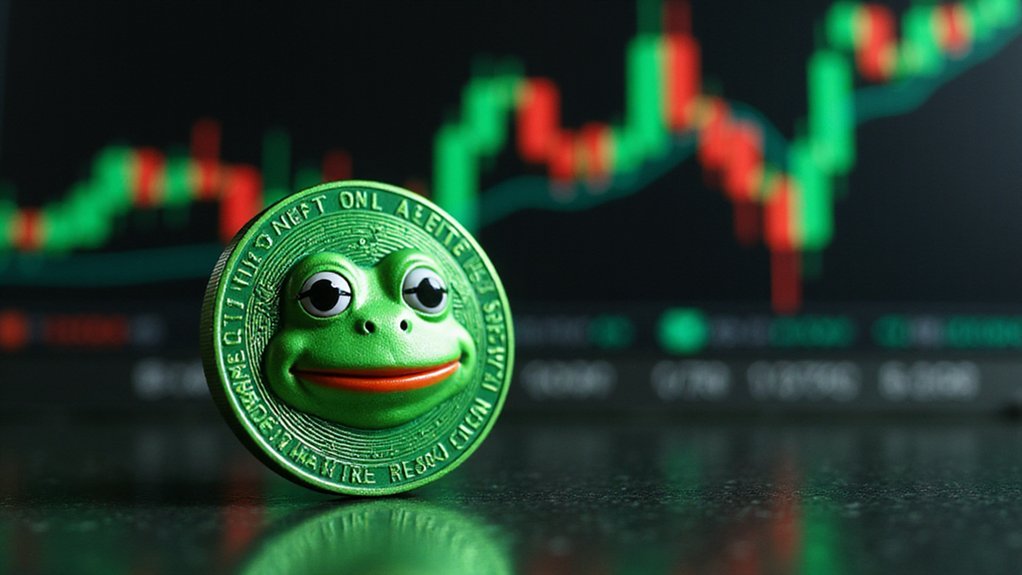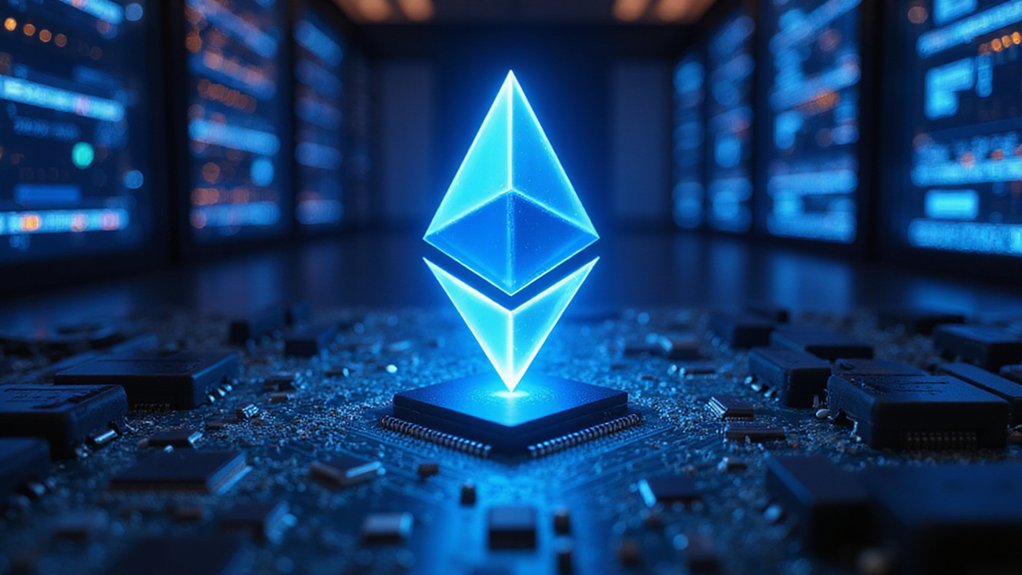A decentralized application (DApp) runs on distributed networks like blockchain rather than centralized servers, eliminating single points of failure. These applications utilize smart contracts—self-executing code that automates transactions when predefined conditions are met. DApps require cryptocurrency wallets for authentication instead of passwords and store data immutably on public ledgers. From DeFi platforms to blockchain gaming, these innovations offer censorship resistance and reduced downtime, though scalability and technical complexity remain persistent challenges for widespread adoption.

Why do tech enthusiasts and blockchain aficionados continue to herald DApps as the future of digital interaction?
The answer lies in their revolutionary architecture—decentralized applications that operate autonomously across distributed networks rather than relying on the traditional client-server model that has dominated computing for decades.
Unlike conventional applications housed on centralized servers (vulnerable to outages, censorship, and data breaches), DApps function across blockchain networks or peer-to-peer systems, eliminating single points of failure while preserving user autonomy.
The architectural genius of DApps lies in their distributed nature—immune to centralized vulnerabilities while empowering users with unprecedented control.
At their core, DApps leverage smart contracts—self-executing code that automates processes without intermediaries—deployed on platforms like Ethereum, Solana, or EOS. These smart contracts execute automatically when pre-defined conditions are met by network nodes.
These applications maintain transparency through open-source codebases and store data immutably on public ledgers, enabling anyone to verify operations.
User interaction typically requires cryptocurrency wallet integration for authentication and transaction signing, a paradigm shift from password-based systems that have proven repeatedly inadequate for modern security challenges.
The applications of this technology extend far beyond cryptocurrencies per se.
DeFi platforms enable permissionless lending and trading; blockchain gaming establishes verifiable digital ownership; supply chains benefit from tamper-proof record-keeping; and DAOs reimagine organizational governance without hierarchical management structures.
The value proposition? Enhanced censorship resistance, reduced downtime, user data sovereignty, and global accessibility unhindered by geographic restrictions.
These advantages notwithstanding, significant hurdles remain.
Scalability constraints imposed by consensus mechanisms limit transaction throughput, while smart contract vulnerabilities present ongoing security concerns¹.
The user experience still demands technical sophistication that exceeds mainstream comfort levels, and regulatory frameworks struggle to adapt to these borderless innovations.
The concept of smart contracts in DApps was originally introduced by American cryptographer Nick Szabo in 1996, long before blockchain technology became mainstream.
Smart contracts typically employ if/when…then logic to create trustless execution pathways that eliminate the need for traditional intermediaries.
The trajectory points toward improvement, however, with Layer 2 scaling solutions addressing performance bottlenecks, cross-chain protocols enhancing interoperability, and zero-knowledge proofs bolstering privacy.
As these technologies mature—and as users grow increasingly disenchanted with the extractive models of Web2 platforms—DApps stand poised to evolve from crypto-enthusiast curiosities to foundational infrastructure for the next iteration of the internet.
¹As evidenced by several high-profile exploits resulting in nine-figure losses.
Frequently Asked Questions
How Secure Are DAPPS Compared to Traditional Applications?
DApps generally offer superior security compared to traditional applications through their decentralized architecture.
By eliminating single points of failure and leveraging blockchain’s immutability, they present formidable resistance to hacking attempts (a welcome departure from the seemingly weekly data breach announcements plaguing centralized systems).
Their cryptographic foundations, transparent code repositories, and community governance further enhance security posture.
Traditional applications, with their centralized servers and proprietary codebases, simply cannot match this distributed resilience—though one must acknowledge that DApps‘ nascent ecosystem introduces its own novel vulnerabilities.
What Programming Languages Are Used to Develop DAPPS?
Several programming languages dominate the DApp development landscape.
Solidity reigns supreme for Ethereum-based smart contracts, while JavaScript and TypeScript (with Web3.js) handle front-end integration.
Rust has gained traction for its performance and memory safety attributes, particularly vital in decentralized environments.
Go offers runtime efficiency for blockchain infrastructure, while Python—with its readability and extensive libraries—finds utility in blockchain-as-a-service applications.
Specialized languages like Vyper provide alternatives for Ethereum development, emphasizing simplicity and security over Solidity‘s extensive feature set.
Can DAPPS Operate Without Cryptocurrency Tokens?
While theoretically possible, DApps without cryptocurrency tokens face substantial hurdles.
Some non-financial applications (identity verification, supply chain tracking) might function through sponsorship models or Layer-2 solutions that abstract token requirements.
However, tokenless designs sacrifice critical ecosystem elements: security incentives for validators, governance mechanisms, development funding, and interoperability with the broader Web3 landscape. The absence of token economics ultimately undermines the very decentralized architecture that makes DApps distinctive—a curious paradox for blockchain purists.
How Do DAPPS Generate Revenue for Their Creators?
DApp creators monetize through various revenue streams, including token economics (ICOs, utility functions, transaction fees), subscription models (premium features, API access), and DeFi mechanisms (liquidity provision, loan interest).
The more sophisticated ventures implement multi-layered strategies: collecting marketplace royalties, charging governance participation fees, and—somewhat inevitably—monetizing user data (anonymized, of course).
Many founders rely heavily on token appreciation itself, creating the curious scenario where revenue generation sometimes becomes secondary to token value preservation.
What Regulations Currently Govern DAPPS in Different Countries?
¹This regulatory fragmentation ironically reinforces the very decentralization DApps were designed to embody.









